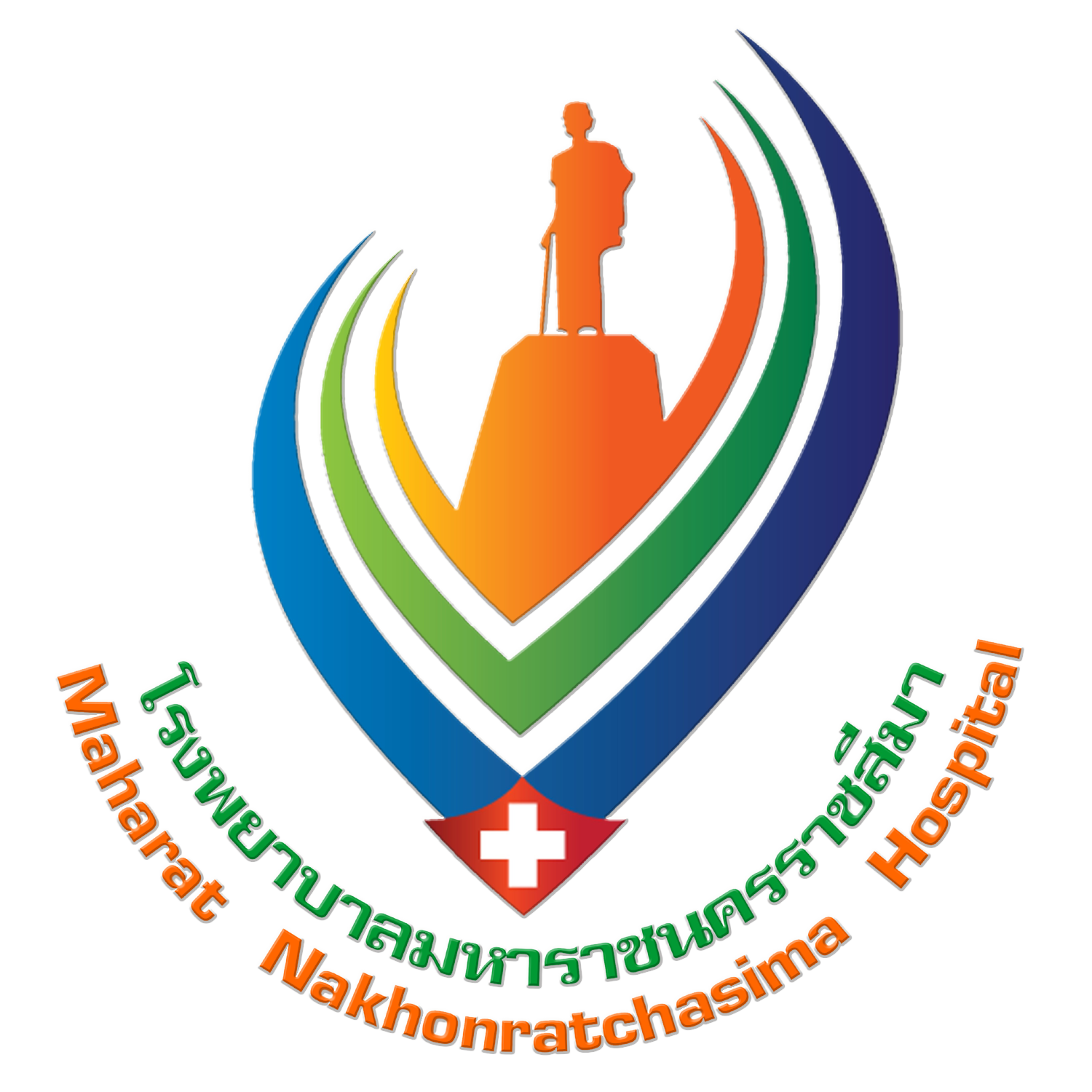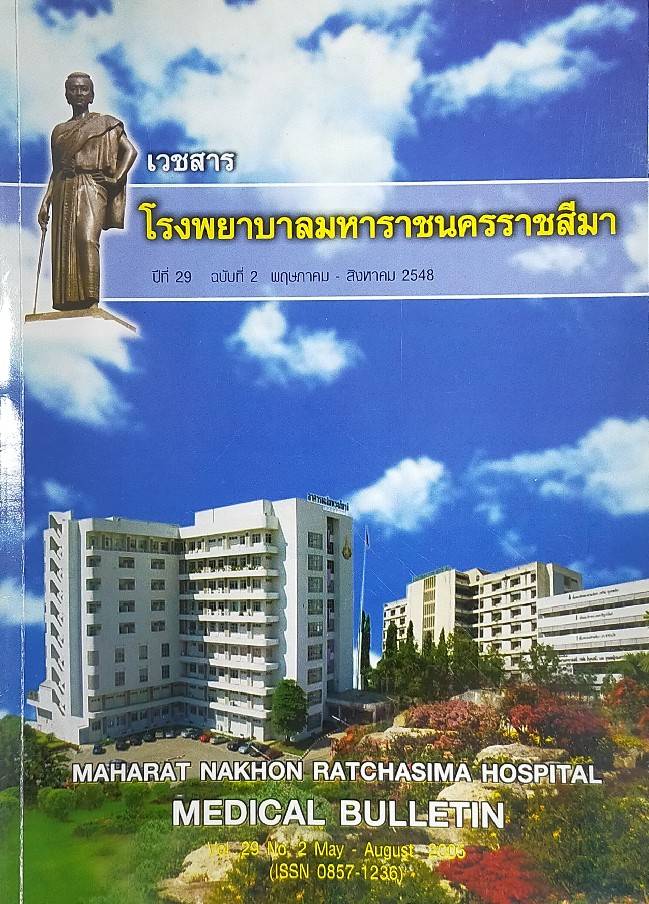การพัฒนาการดูแลหญิงตั้งครรภ์และทารกแรกเกิดเพื่อลดภาวะขาดออกซิเจน ในทารกแรกเกิดในโรงพยาบาลครบุรี นครราชสีมา
Main Article Content
บทคัดย่อ
บทคัดย่อ: ภาวะขาดออกซิเจนในทารกแรกเกิด เป็นภาวะอันตรายมีผลระยะยาวต่อทารก และหากมีความรุนแรงมาก ทำให้ทารกมีความพิการทางสมองได้ การดูแลทารกแรกเกิดที่มีภาวะขาดออกซิเจนในทารกแรกเกิดมีความยุ่งยากซับซ้อนและมีค่าใช้จ่ายสูง โรงพยาบาลครบุรี เป็นโรงพยาบาลชุมชนหนึ่งในจังหวัดนครราชสีมาที่ประสบปัญหามีอัตราการเกิดภาวะขาดออกซิเจนในทารกแรกเกิดสูง โดยในเดือนตุลาคม – ธันวาคม 2546 มีภาวะขาดออกซิเจนในทารกแรกเกิดเท่ากับ 36.44: 1,000 ทารกเกิดมีชีพซึ่งสูงกว่าค่ามาตรฐานของประเทศคือ 30:1,000 ทารกเกิดมีชีพทีมสหวิชาชีพ โรงพยาบาลครบุรี ตระหนักในปัญหาดังกล่าว จึงได้ทำการพัฒนาอย่างต่อเนื่องเพื่อป้องกันการเกิดภาวะขาดออกซิเจนในทารกแรกเกิด โดยใช้กระบวนการทบทวนสาเหตุการเกิดภาวะขาดออกซิเจนในทารกแรกเกิด, การวิเคราะห์หาสาเหตุ โดยวิธี Root cause analysis, การจัดประชุมวิชาการทั้งทฤษฎีและการปฏิบัติ โดยความร่วมมือกับแพทย์เฉพาะทางโรงพยาบาลมหาราชนครราชสีมา, จัดทำ clinical practice guideline และปรับปรุงการทำงานตั้งแต่การฝากครรภ์จนกระทั่งการดูแลหลังคลอดบุตร ซึ่งการพัฒนาดังกล่าวส่งผลให้อัตราการเกิดภาวะขาดออกซิเจนในทารกแรกเกิดลดลงอย่างชัดเจน โดยในเดือน มกราคม – มีนาคม 2548 พบภาวะขาดออกซิเจนในทารกแรกเกิดเพียง 1 ราย คิดเป็น 0.06:1,000 ทารกเกิดมีชีพ
Article Details

อนุญาตภายใต้เงื่อนไข Creative Commons Attribution-NonCommercial-NoDerivatives 4.0 International License.
เอกสารอ้างอิง
เกรียงศักดิ์ จีระแพทย์. แอสฟีย์กเชียปริกำเนิด. ใน: มนตรี ตู้จินดา, วินัย สุวัตถี, อรุณ วงษ์จิราษฏ์, ประอร เชาวลิตธำรง, พิภพ เจริญภิญโญ, บรรณาธิการ. กุมารเวชศาสตร์ เล่ม 1. พิมพ์ครั้งที่ 2. กรุงเทพมหานคร: เรือนแก้วการพิมพ์; 2540. หน้า 246-53.
De L Castello AM, Manandhar DS. Perinatal asphyxia in less developed countries. Arch Dis Child 1994; 71: F1-F3.
Basic Newborn Resuscitation: a practice guide. WHO/RHT/MSM/98.1.
สาธิต โหตระกิตย์. ภาวะฉุกเฉินในทารกแรกเกิด (ภาวะขาดออกซิเจนในทารกปริกำเนิด) ใน: สมศักดิ์ โลห์เลขา, เฉลิมศรี ตปนียโอฬาร, บรรณาธิการ. ภาวะฉุกเฉินทางกุมารเวชศาสตร์, พิมพ์ครั้งที่ 1. กรุงเทพมหานคร: โรงพิมพ์ชัยเจริญ; 2543. หน้า 1-5.
ศิริพร กัญชนะ. The changing trend in matermal and perinatal mortality. ใน: บุญศรี จันทร์รัชชกูล, รสิก รังสิปราการ, พัญญู พันธ์บูรณะ, บรรณาธิการ. สูติศาสตร์ร่วมสมัย, พิมพ์ครั้งที่ 1. กรุงเทพมหานตร: โรงพิมพ์ข้าวฟ่าง; 2542. หน้า 1-11.
ธราธิป โคละทัต. Neonatal resuscitation. ใน: วิทยา ถีฐาพันธ์, ธราธิป โคละทัต, จีระศักดิ์ มนัสากร, บรรณาธิกาธิการ. Birth asphyxia & Neonatal resuscitation. พิมพ์ครั้งที่ 1. กรุงเทพมหานคร: ภาควิชาสูติสาสตร์-นรีเวชวิทยาคณะ แพทยศาสตร์ ศิริราชพยาบาล: 2537. หน้า 57-61.
ประพุทธ ศิริปุณย์. Perspective in neonatal care in Thai- land. ใน: ธราธิป โคละทัต, สุนทร ฮ้อเผ่าพันธ์, บรรณาธิการ. Neonatology for pediatricians. พิมพ์ครั้งที่1. กรุงเทพมหานคร: พี.เอ.ลีพวิ่ง; 2542. หน้า 13.
สุรางค์ เจียนจรรยา, พงษ์ศักดิ์ วิสุทธิพันธ์. สมองพิการ. ใน: วันดี วราวิทย์,ประพุทธ ศิริปุณย์, สุรางค์ เจียมจรรยา. บรรณาธิการ. กุมารเวชศาสตร์ (ฉบับเรียบเรียงใหม่ เล่ม 2), พิมพ์ครั้งที่ 1. กรุงเทพมหานคร: โฮลิสติก พับลิชชิ่ง; 2540. หน้า 238-42.


